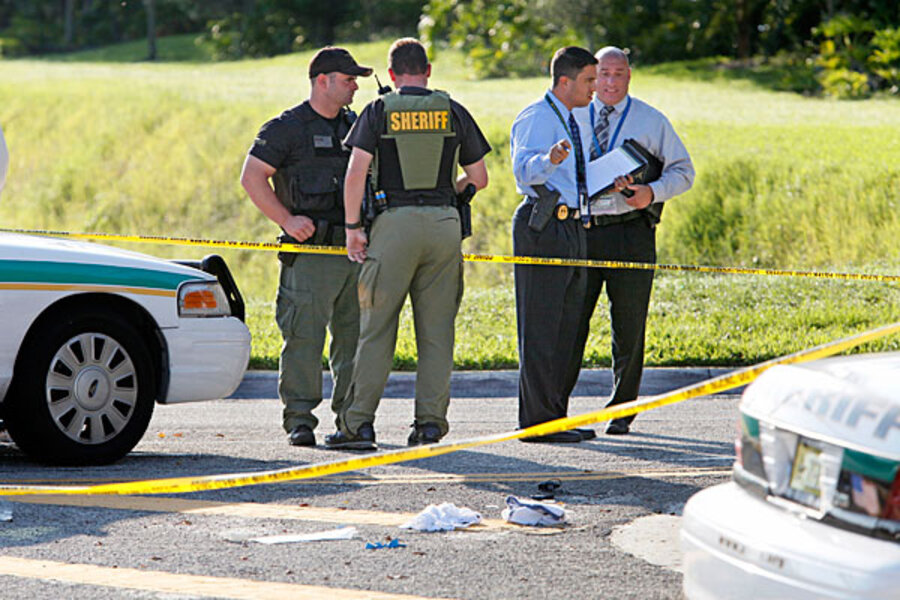Violent crime falls again: why some experts are 'stumped'
Loading...
| Chicago
In a trend that has some experts "stumped," violent crime in 2010 dropped 6 percent from the year before – the fourth consecutive annual decline, according a report released Monday by the Federal Bureau of Investigation.
The numbers come as the housing market remains stagnant and unemployment remains persistently high – conditions that might lead to a rise in crime. Moreover, most law enforcement agencies throughout the US are undergoing budget cuts, with 1 percent fewer law-enforcement officers on the streets today than there were in 2008, the FBI data say.
In this light, the continued decline in violent crime is forcing some criminologists to reexamine the what might be the causes of crime. “It will be years before we get the answer, if we do, to what’s going on right now,” says William Pridemore, a criminal justice professor at Indiana University in Bloomington. “Criminologists have been pretty stumped.”
He is loath to attribute the drop to any one reason, but others offer a matrix of possibilities.
Better technology has made law enforcement more adept at strategic policing, says James Alan Fox, a criminologist at Northeastern University in Boston. Another reason is the aging baby boom population over 50, which represents a group that has “the lowest involvement in crime,” he says.
The report, “Crime in the United States,” tabulates data from more than 18,000 city, county, university and college, state, tribal and federal law enforcement agencies. Violent crimes are defined as murder, non-negligent manslaughter, forcible rape, robbery, or aggravated assault. Robberies saw the most significant drop (10 percent), while burglaries saw the smallest (2 percent).
Also in 2010, property crimes fell 2.7 percent from the previous year, an annual drop that started in 2003. Property crime accounted for 88 percent of the 10 million total crimes reported in 2010. Violent crime accounted for the remaining 12 percent.
The top reported crime was drug abuse violation (1.6 million), followed by driving while intoxicated (1.4 million).
While the FBI data may be “surprising” in showing total declines, they do not represent the complete picture, says Professor Pridemore. “That one number is not a summary of all the things that are going on in every city and town across the country,” he says. For example, violent crime in New York City rose 5 percent in 2010.
He also suggests that the economy is much more likely to have an effect on crimes connected to family stress inside the home, such as suicide and partner and child abuse.
A study published Monday in Pediatrics magazine links child abuse, mostly of infants, to the recession. Abuse of children under age 5 increased 65 percent during the recession, according to the study.





